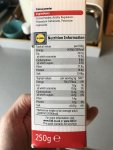What about cocoa powder in hot water? Will epicatechin be lost in hot temperatures? I drink cocoa in hot water daily, no sugar, just pure cocoa powder,
Haven't thought about that. But must assume not much different to the catechins in green tea, also usually in hot water.
EC in above chart is Epichatechin, and as the other catechins does decrease with water of higher temperatures and longer times exposure. 82° celcius seems to be the cut-off, where decreases are larger.
Plants like cacao are living beings, and therefore each of them have different levels of Epicatechin in them. Just as humans might have a normal range of 200-900 pg/ml of Vitamin B12 in their serum. And some even below or above that.
Same with plant-products, not one cocoa bean will have the same content then the next, or the next plant, or in the next seasons with different enviromental growth factors. For example in this study they tested 11 different cocoa powders available in Spain and found the 'normal range' of Epicatechin therein:
(-)-Epicatechin was in the range of 116.02–730.26 µg/g, whereas (+)-catechin was in the range of 81.40–447.62 µg/g in the commercial cocoa products studied
So therefore large producers usually mix ingredients from different farms, to average variations out and get more consistant quality. The nutrients content of natural products, like Epicatechin in cocoa products, will still wary from year to year, even with exactly the same brand.
But above study points to even more variation through the production process, like dutching, which appearently decreased the Epicatechin content by a whooping 67% in cocoa powders in the same study. Such a large decline also I wasn't aware of:
https://www.worldcocoafoundation.org/wp-content/uploads/files_mf/andreslacueva2008.pdf
Abstract
Major brands of cocoa powder products present in the Spanish market were analyzed for monomeric flavanols [(+)-catechin and (−)-epicatechin] and flavonols [quercetin-3-glucuronide, quercetin-3-glucoside (isoquercitrin), quercetin-3-arabinoside, and quercetin]. In addition, the influence of the manufacturing process of cocoa powder products, in particular, the alkalinization treatment (Dutching), on the original content of these flavonoids has been studied. (−)-Epicatechin was in the range of 116.02–730.26 µg/g, whereas (+)-catechin was in the range of 81.40–447.62 µg/g in the commercial cocoa products studied. Among flavonols, quercetin-3-arabinoside and isoquercitrin were the major flavonols in the cocoa powder products studied, ranging from 2.10 to 40.33 µg/g and from 3.97 to 42.74 µg/g, respectively, followed by quercetin-3-glucuronide (0.13–9.88 µg/g) and quercetin aglycone (0.28–3.25 µg/g). To our knowledge, these results are the first quantitative data in relation to the content of individualized flavonol derivatives in commercial cocoa powder products. The alkalinization treatment resulted in 60% loss of the mean total flavonoid content. Among flavanols, (−)-epicatechin presented a larger decline (67%, as a mean percentage difference) than (+)-catechin (38%), probably because of its epimerization into (−)-catechin, a less bioavailable form of catechin. A decline was also confirmed for di-, tri-, and tetrameric procyanidins. In the case of flavonols, quercetin presented the highest loss (86%), whereas quercetin-3-glucuronide, quercetin-3-arabinoside, and isoquercitrin showed a similar decrease (58, 62, and 61%, respectively). It is concluded that the large decrease found in the flavonoid content of natural cocoa powder, together with the observed change in the monomeric flavanol profile that results from the alkalinization treatment, could affect the antioxidant properties and the polyphenol biovailability of cocoa powder products.
(emphasis by me)
All we know is pretty much what we went in knowing: that some brands are better than others, and cocoa powders are probably better than choc bars
Non-dutched cocoa powders are not
probably, but
certainly much better than
any dark chocolate. Only better taste its the other way round. However, I use about 20g in my morning muesli (berries, nuts, seeds..) sweetened with stevia extract. And that tastes as good, that I easily can eat a whole bowl to satiation.
If we knew what brand tested well, it wouldn't be difficult to compare labels and see how our brand holds up to the best of the testings ....
But since you still seem to somewhat doubt the superiority of plain cocoa powder, despite all the evidence of in average double the Epicatichin content, here you go - the hit list of dark chocolates:
https://www.hindawi.com/journals/isrn/2014/628196/tab5/
Code:
Product Serving Size Catechin Epicatechin[32]
Cocoa Powder (Natsol Laboratories) N/A 0.20% 0.28%
Lindt Excellence, 90% cocoa 40 6.04 mg 17.32 mg
Lindt Excellence, 85% cocoa 40 4.80 mg 22.76 mg
Lindt Excellence, 70% cocoa 40 7.84 mg 28.56 mg
Ghirardelli Chocolate, 86% cacao 45 4.50 mg 23.85 mg
Ghirardelli Chocolate, 72% cacao 38 5.78 mg 27.70 mg
Ghirardelli Chocolate, 60% cacao 38 4.79 mg 17.78 mg
Godiva Chocolatier, 85% cacao 40 5.20 mg 31.68 mg
Safeway Select chocolate, 85% cacao 40 4.76 mg 10.52 mg
Safeway Select chocolate, 72% cacao 40 4.84 mg 14.64 mg
Green & Black’s chocolate, 50% cocoa 40 3.28 mg 11.92 mg
Bournville Cranberry chocolate, 50% cocoa 33 1.49 mg 3.76 mg
Bournville Rich Cocoa chocolate, 50% cocoa 33 1.09 mg 3.60 mg
Interestingly, Lindt 70% contains more than Lindt 85 or 90%. And the reason its the only of the 3 not dutched, which usually isn't disclosed on the packaging.
However that may be,
the best dark chocolate (of the harvest that year of above study) - Godiva - would give me still only about 16mg of Epicatechin per day for the 20g I eat each day, While
the worst pure cocoa powder at daily the same amount already 23mg. And also at best - for not having a apple to pear comparison - a whooping 146mg Epichatechin in just 20g of cocoa powder.
Anyway I take both, 20g dark chocolate only for its taste (and minimizing my only source of sugar and excessive costs), and 20g of pure cocoa powder for its whooping Epicatechin content, additional to is taste.


